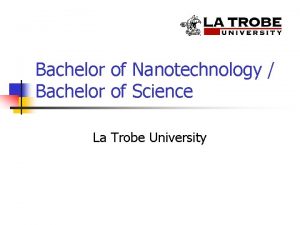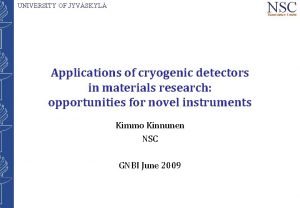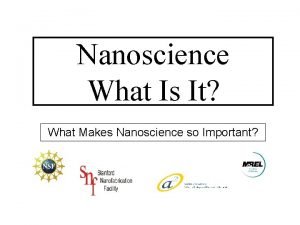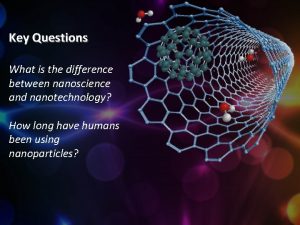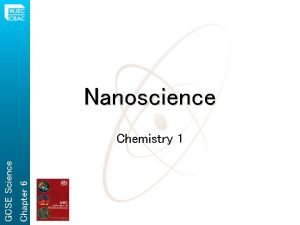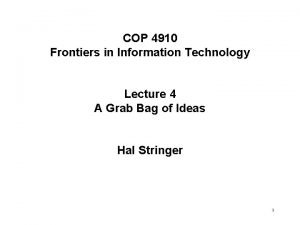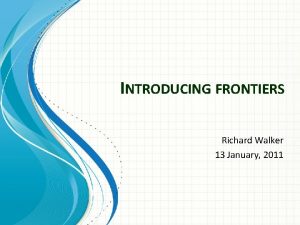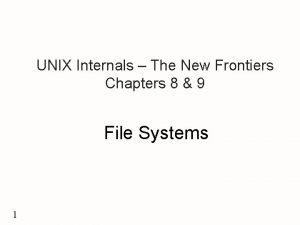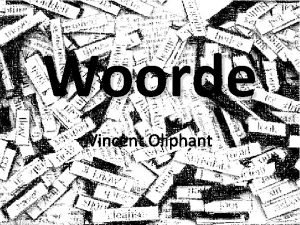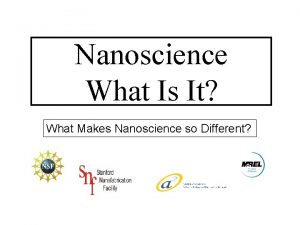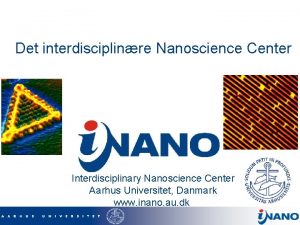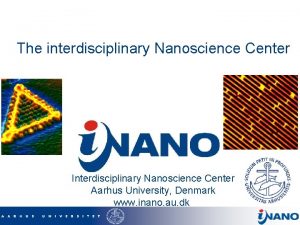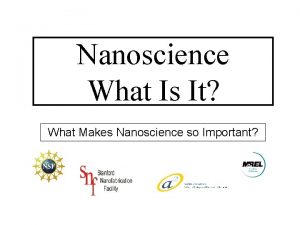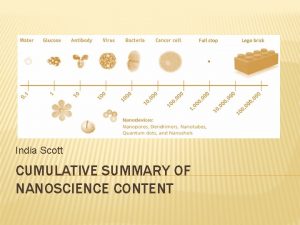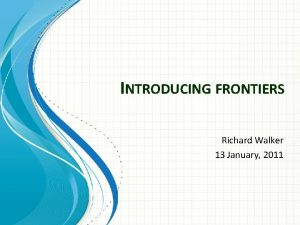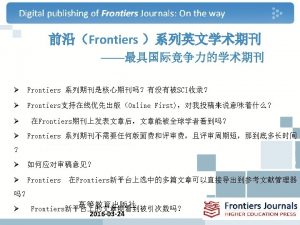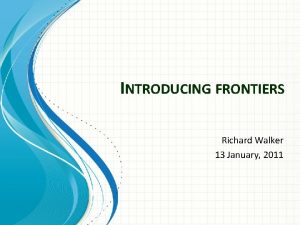Frontiers in Quantum Nanoscience A Sir Mark Oliphant














- Slides: 14

Frontiers in Quantum Nanoscience A Sir Mark Oliphant & PITP Conference Entanglement Renormalization Noosa, January 2006 Guifre Vidal The University of Queensland

Introduction Science and Technology of quantum many-body systems entanglement Quantum Information Theory simulation algorithms Computational Physics

Outline • Overview: new simulation algorithms for quantum systems • Time evolution in 1 D quantum lattices (e. g. spin chains) • Entanglement renormalization

Recent results 2 D 2005 2004 2003 time 1992 1 D • Hastings Entanglement renormalization TEBD 1 D PEPS 2 D • Osborne • Verstraete • Cirac time evolution DMRG 1 D ground state • White (Other tools: mean field, density functional theory, quantum Monte Carlo, positive-P representation. . . )

Computational problem • Simulating N quantum systems on a classical computer seems to be hard Hilbert Space dimension = 16 2 8 4 N= 100 dim(H) = “small” system to test 2 D Heisenberg model (High-T superconductivity) Hilbert Space dimension = 1, 267, 650, 600, 228, 229, 401, 496, 703, 205, 376

problems: (i) solutions: state • Use a tensor network: coefficients i 1 (ii) … (for 1 D systems MPS, DMRG) in evolution i 1 . . . in • Decompose it into small gates: (if coefficients i 1 … in j 1 … jn , with ) i 1 . . . in j 1 . . . jn

simulation of time evolution in 1 D quantum lattices (spin chains, fermions, bosons, . . . ) • efficient description of i 1 . . . and i 1 . . . in Trotter expansion in matrix product state • efficient update of = operations j 1 . . . jn

Entanglement & efficient simulations tensor network (1 D: matrix product state) i 1 … in i 1 coefficients • Schmidt decomposition … in coefficients efficiency coef entanglement A B

Entanglement in 1 D systems • Toy model I (non-critical chain): correlation length number of shared singlets A: B • Toy model II (critical chain):

summary: • arbitrary state spins coefficients • non-critical 1 D spins coefficients • critical 1 D spins coefficients In DMRG, TEBD & PEPS, the amount of entanglement determines the efficiency of the simulation change of attitude Entanglement renormalization disentangle the system

Examples: Entanglement renormalization complete disentanglement no disentanglement partial disentanglement

Entanglement renormalization Multi-scale entanglement renormalization ansatz (MERA)

Performance: system size (1 D) DMRG ( greatest achievements in 13 years according to S. White Entanglement renormalization ( first tests at UQ ) ) memory time code days in “big” machine C, fortran, highly optimized a few hours in this laptop matlab Extension to 2 D: work in progress

Conclusions • Understanding the structure of entanglement in quantum many-body systems is the key to achieving an efficient simulation in a wide range of problems. or simply. . . • There are new tools to efficiently simulate quantum lattice systems in 1 D, 2 D, . . .
 Advantages and disadvantages of nanotechnology
Advantages and disadvantages of nanotechnology Nanoscience
Nanoscience Nanoscience
Nanoscience Nanoscience
Nanoscience Nanoscience
Nanoscience Difference between nanoscience and nanotechnology
Difference between nanoscience and nanotechnology Sciwo
Sciwo Nanoscience gcse
Nanoscience gcse Origin of quantum mechanics
Origin of quantum mechanics Quantum physics vs mechanics
Quantum physics vs mechanics Frontiers in chemical engineering
Frontiers in chemical engineering Cop 4910
Cop 4910 Richard walker frontiers
Richard walker frontiers Unix internals: the new frontiers
Unix internals: the new frontiers Alister stevens
Alister stevens
